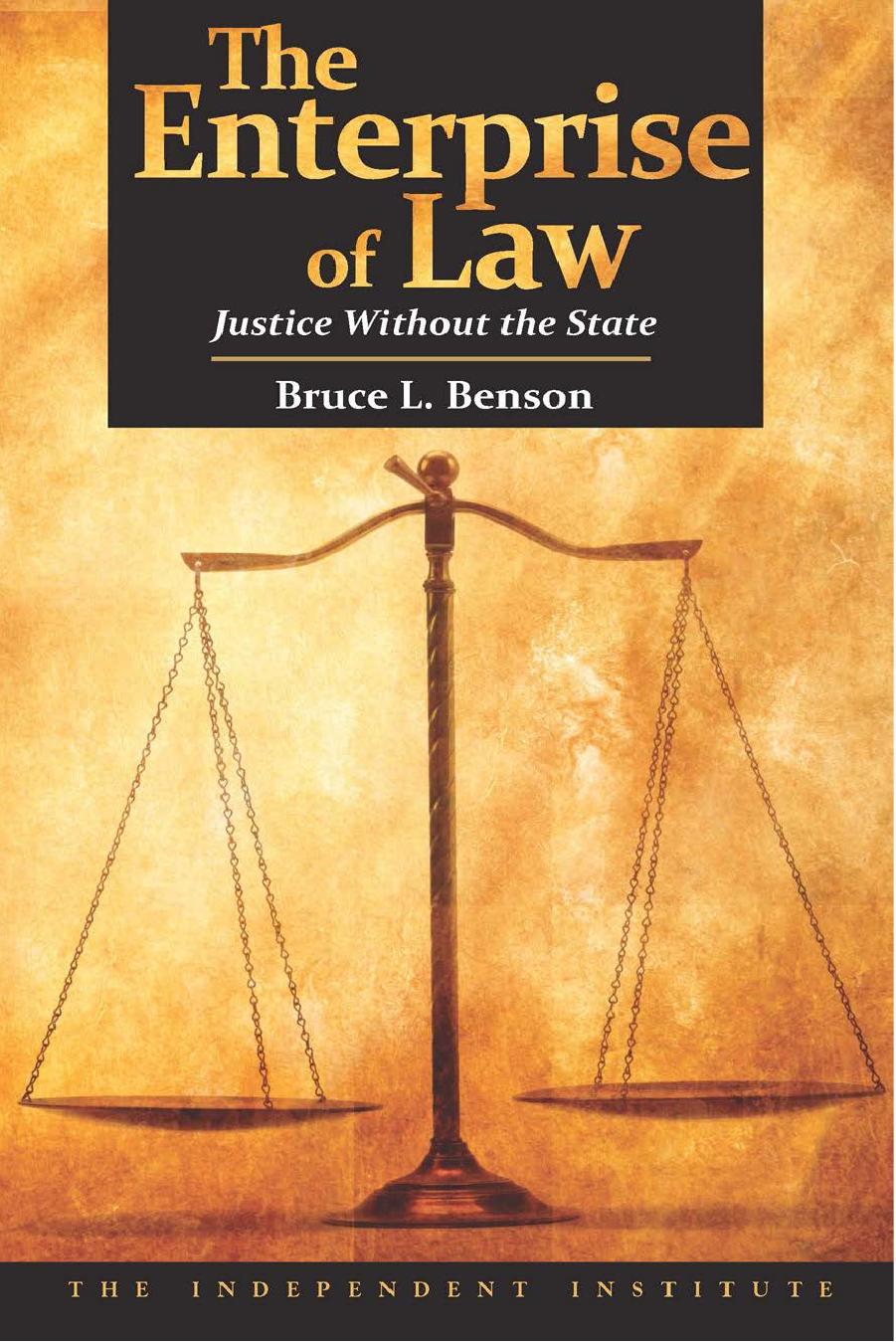The Enterprise of Law: Justice Without the State by Bruce L. Benson

Author:Bruce L. Benson [Benson, Bruce L.]
Language: eng
Format: epub, pdf
Publisher: Independent Institute
Published: 0101-01-01T00:00:00+00:00
Corporate Executives. The Figgie Report also examined the effects of rising crime on corporate policy and the lifestyle of Fortune 1000 business executives. Seventy-five percent of the senior executives surveyed secured their homes with burglar and fire alarms, had guards and guard dogs, had unlisted phone numbers, or kept their addresses confidential.10 In addition, 46 percent of the surveyed executives nationwide and 62 percent of those in large cities indicated that crime in their corporate neighborhoods had affected programming, planning, and security policies. Most corporate headquarters had a “vast array” of security procedures and devices: 88 percent had building security checks; 87 percent had fire alarms; 84 percent had automatic sprinkler systems; 66 percent had burglar alarms; 64 percent had floodlighting; 50 percent had automatic light timers; 48 percent had closed circuit television; 38 percent had electronic card identification systems; 30 percent had photoelectric timers; and 24 percent had armed guards.11 Four hundred of the 1,000 companies used at least six of these ten security systems, and unarmed guards, plainclothes security personnel, and coded door locks were common. Most of the surveyed corporations also had comprehensive security programs, including education programs for employees (73 percent), crisis management plans (63 percent), and employment of a security specialist (62 percent).
Corporate executives took numerous measures to protect themselves and their families. Fifty-three percent of those surveyed had burglar and fire alarms in their homes, for example. Thirty-five percent varied their daily route to work, and 19 percent alternated cars. The Figgie Report concluded: “It’s obvious that the development of a corporate security program is a tremendously time-consuming, cumbersome, and expensive process that places a burden on the employee as well as the employer.”12
Efforts to avoid crime are expensive. A 1970 study by Predicast, Inc., estimated that sales of crime deterrent equipment grew at an annual rate of 8.8 percent between 1958 and 1963, increasing to 11 percent between 1963 and 1968 (see Tables 9.1 and 9.2). Sales of monitoring and detection equipment grew by 7.1 percent per year over the 1958-1963 period and 10.4 percent per year from 1963 to 1968. These equipment sales accounted for considerably less than half the total expenditures on security during this period (41 percent in 1958 and 36 percent in 1968). The largest category of spending was for guard and investigative services.
Table 9.1 Sales of Private Security Equipment ($ Million).
Products
1958
1963
1968
Download
The Enterprise of Law: Justice Without the State by Bruce L. Benson.pdf
This site does not store any files on its server. We only index and link to content provided by other sites. Please contact the content providers to delete copyright contents if any and email us, we'll remove relevant links or contents immediately.
Killers of the Flower Moon by David Grann(3753)
Machine Learning at Scale with H2O by Gregory Keys | David Whiting(3645)
Oathbringer (The Stormlight Archive, Book 3) by Brandon Sanderson(2644)
Will by Will Smith(2581)
Once Upon a Broken Heart by Stephanie Garber(2529)
Guns, Germs and Steel by Diamond Jared(2203)
Borders by unknow(2119)
It Starts With Us (It Ends with Us #2) by Colleen Hoover(2048)
The Room Where It Happened by John Bolton;(2034)
Friends, Lovers, and the Big Terrible Thing by Matthew Perry(2005)
The Color of Law by Richard Rothstein(1821)
HBR's 10 Must Reads 2022 by Harvard Business Review(1698)
The Strength In Our Scars by Bianca Sparacino(1696)
A Short History of War by Jeremy Black(1672)
Water Rights and the Environment in the United States by John Burch(1607)
Examples & Explanations: Administrative Law by William F. Funk & Richard H. Seamon(1552)
515945210 by Unknown(1522)
Pharmacy Practice and The Law by Richard Abood(1495)
That Every Man Be Armed by Stephen P. Halbrook(1480)
